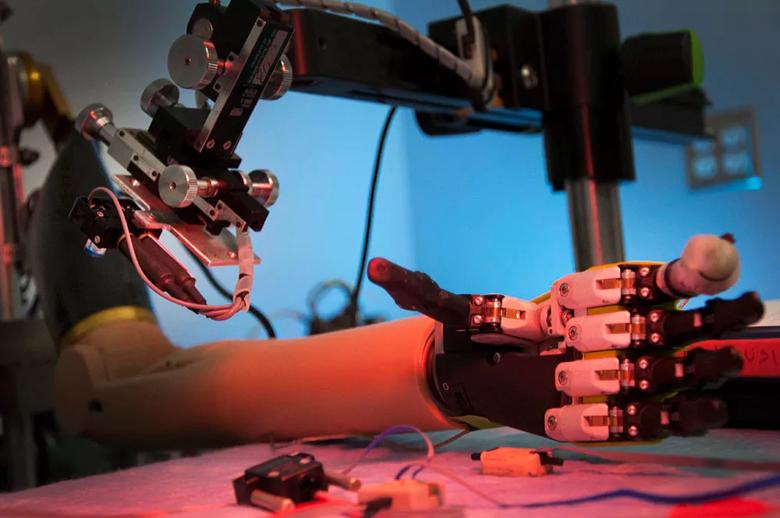Cleveland Clinic News Service | 216.444.0141
We’re available to shoot custom interviews & b-roll for media outlets upon request.
CCNS health and medical content is consumer-friendly, professional broadcast quality (available in HD), and available to media outlets each day.


Case Western Reserve University and Cleveland Clinic have launched a new partnership to advance research and education in biomedical engineering (BME) across greater Cleveland’s growing health innovation ecosystem.
This biomedical engineering alliance capitalizes on the strengths of both institutions’ nationally renowned BME departments to create a unique program with an extensive portfolio of laboratory breakthroughs that led to life-changing treatments for patients.
Additionally, the alliance increases opportunities for trainees at all levels—from high school to postdoctoral education—to study with renowned scientists, physicians and engineers whose expertise ranges from nanotechnology and neural engineering to imaging and regenerative medicine.
“This agreement furthers Northeast Ohio as a biomedical hub,” said Geoff Vince, Ph.D., Chair of Biomedical Engineering at Cleveland Clinic Lerner Research Institute. “After many years of close collaboration, this formal alliance will push forward the teaching and research mission of our institutions.”
The alliance includes more than 50 researchers with primary appointments in BME, as well as another 80 Case Western Reserve researchers located in such disciplines as cardiology, ophthalmology, orthopedics and precision medicine. In 2017 Case Western Reserve’s BME researchers alone received nearly $20 million in federal, industry and nonprofit support.
“Our departments’ researchers have long partnered on projects where combining their experience and expertise could lead to better and faster results,” said Bob Kirsch, Ph.D., chair of Case Western Reserve’s BME department. “This new model creates a framework to catalyze joint efforts in a more intentional manner, rather than relying on individual relationships or chance encounters to spark collaborations.”
Celebrating its 50th anniversary this year, Case Western Reserve’s biomedical engineering department is among the first-ever founded in the U.S. The department is home to about 500 undergraduate and 150 graduate students and pursues research to develop new technologies and apply them to a broad range of clinical conditions.
The university’s department also is active in entrepreneurial efforts, as illustrated by the Case-Coulter Translational Research Partnership and several educational programs focused on translational research and commercialization. In 2015, Medtronic acquired CardioInsight, a company co-founded by a Case Western Reserve graduate student, for $93 million.
Cleveland Clinic’s BME department is renowned for its commitment to investigation, innovation and translation of scientific discoveries to enhance patient care. Cleveland Clinic BME researchers are leaders in several major NIH grants, including the $14 million NIH Center for Accelerated Innovations.
The hospital’s BME department has several international research affiliations, including the Center for Transformative Nanomedicine, a global partnership with Hebrew University of Jerusalem that is focused on nanotechnology through education and research. The department also has an alliance with the University of Technology and Engineering in Lima, Peru.
Cleveland Clinic is a nonprofit multispecialty academic medical center that integrates clinical and hospital care with research and education. Located in Cleveland, Ohio, it was founded in 1921 by four renowned physicians with a vision of providing outstanding patient care based upon the principles of cooperation, compassion and innovation. Cleveland Clinic has pioneered many medical breakthroughs, including coronary artery bypass surgery and the first face transplant in the United States. Cleveland Clinic is consistently recognized in the U.S. and throughout the world for its expertise and care. Among Cleveland Clinic’s 82,600 employees worldwide are more than 5,786 salaried physicians and researchers, and 20,700 registered nurses and advanced practice providers, representing 140 medical specialties and subspecialties. Cleveland Clinic is a 6,728-bed health system that includes a 173-acre main campus near downtown Cleveland, 23 hospitals, 280 outpatient facilities, including locations in northeast Ohio; Florida; Las Vegas, Nevada; Toronto, Canada; Abu Dhabi, UAE; and London, England. In 2024, there were 15.7 million outpatient encounters, 333,000 hospital admissions and observations, and 320,000 surgeries and procedures throughout Cleveland Clinic’s health system. Patients came for treatment from every state and 112 countries. Visit us at clevelandclinic.org. Follow us at x.com/CleClinicNews. News and resources are available at newsroom.clevelandclinic.org.
Editor’s Note: Cleveland Clinic News Service is available to provide broadcast-quality interviews and B-roll upon request.